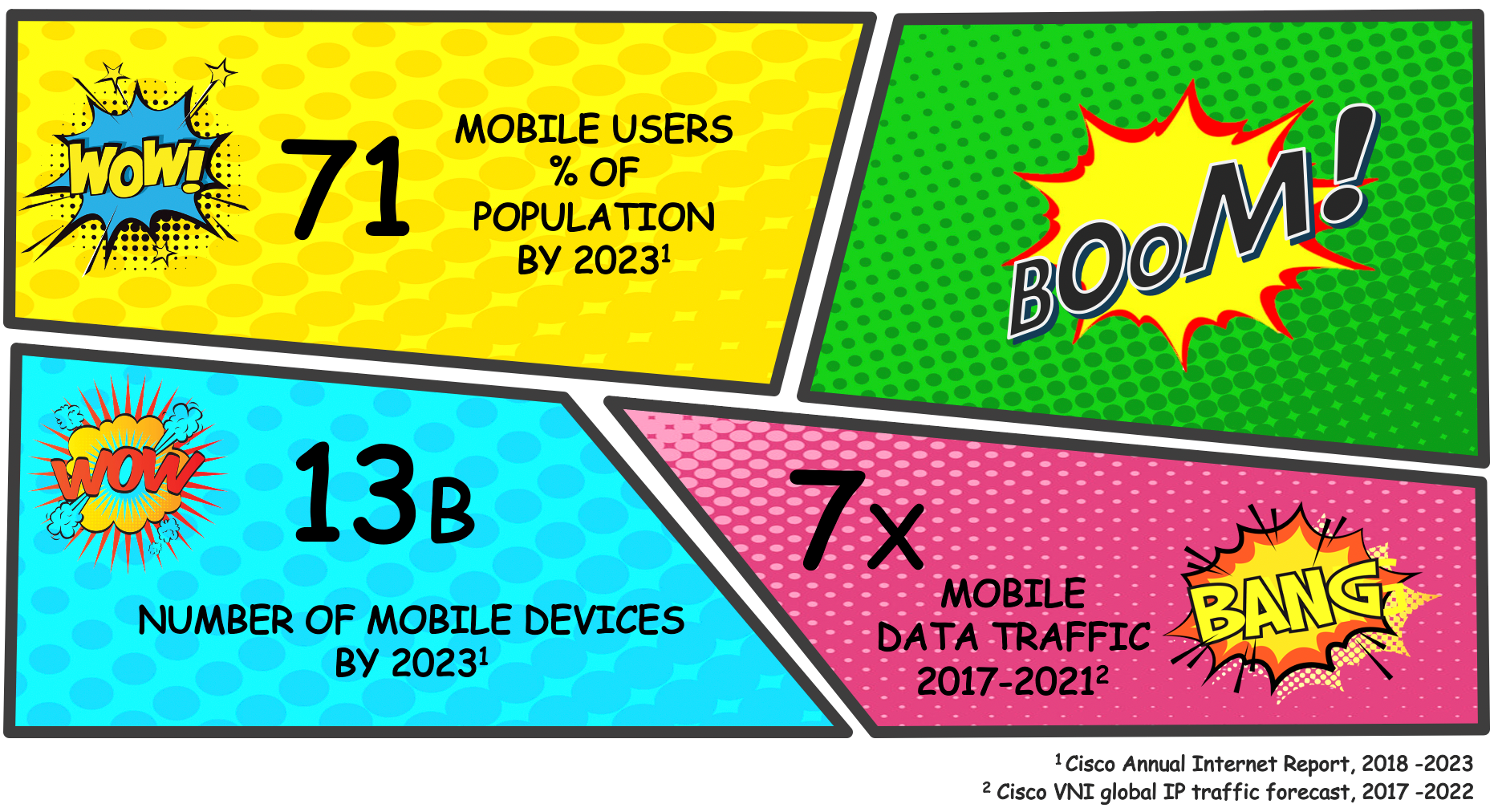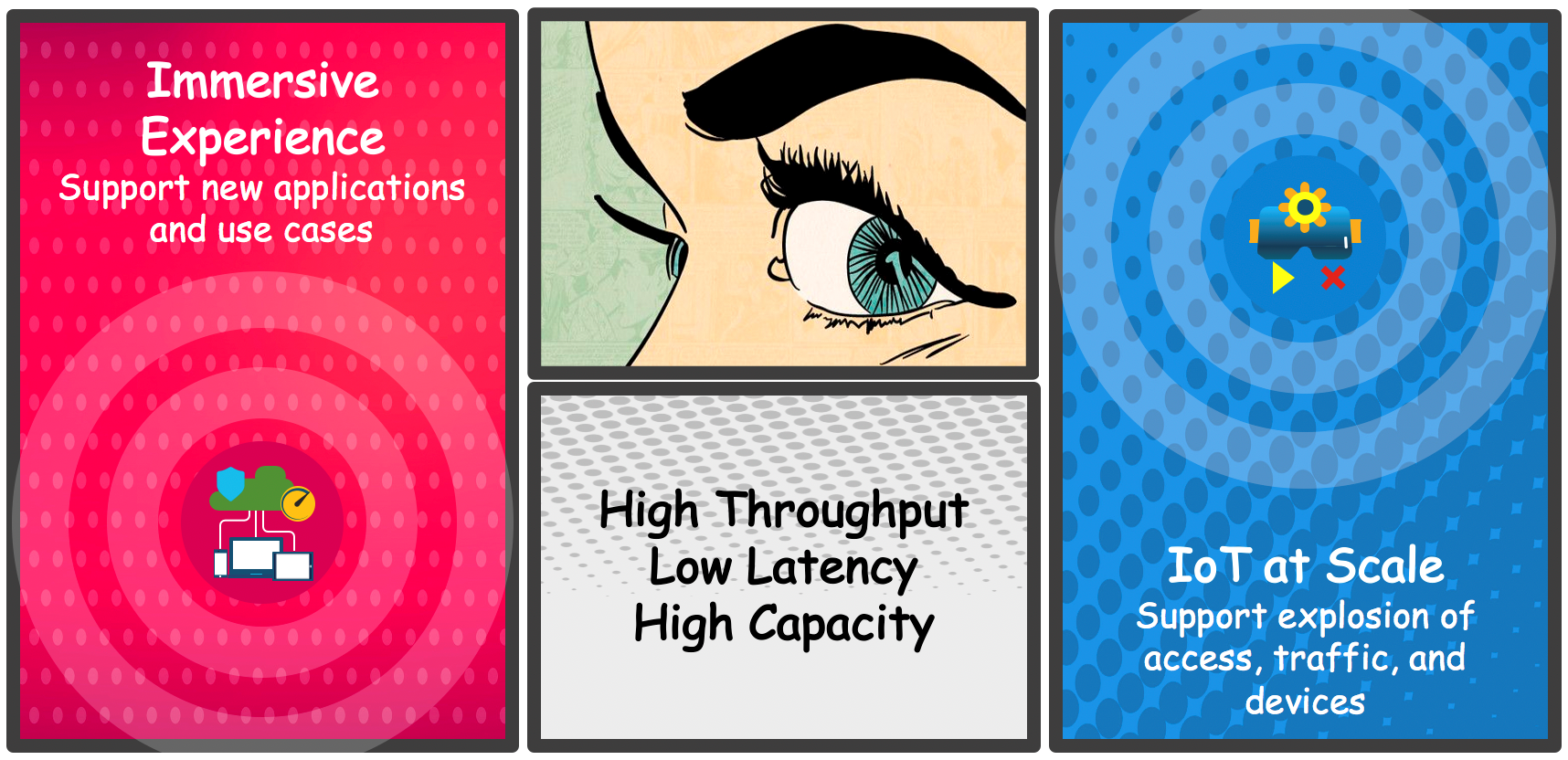Superheroes get the job done better together. Batman relies on Robin, Rocket can’t live without Groot, and Captain has Bucky. And when it comes to wireless access, nothing can be as complementary as Wi-Fi 6 and 5G. This is the story of these two wireless superheroes. It’s about their strengths, weaknesses, and how they can fight the villain better together, making users happy by giving them the best experience and saving the day for enterprises.
The Beginning
Wi-Fi 6 put itself on the superhero map a few years ago to address increasing wireless network issues within organizations. It comes from a long-standing and reputable wireless family. In comparison to its predecessors, Wi-Fi 5 and earlier versions, Wi-Fi 6 has the power to fight far more network bottlenecks. It protects more users and more devices with its powerful resource utilization and efficiency. With the lightning speed of Wi-Fi 6, devices can perform at higher peak speed in high throughput environments. And our new champion is able to significantly improve device battery life and enhance coverage.
5G is a young hero who was born into a family of superheroes. Its ancestors 3G and 4G were the first generations who made it possible for users, while on the move, to consume voice, video, and data in newly digitized form. As the type and volume of the data increased and became more sophisticated, users were looking for a new hero to protect them with lower latency and higher data rates.
The Rivalry
We all have an idea or two about the classic old vs. new rivalry. Our heroes are not immune to this concept. 5G emerged as an adversarial new contender for wireless connectivity in the mobility game. When this happened, Wi-Fi was portrayed as an obsolete technology, even though its popularity and footprint expand every day. On the other side of the coin, 5G capabilities and limited usages were questioned in comparison to Wi-Fi’s dominance in the market. This animosity confused users who simply want the best network access, anywhere at any time, regardless of which hero to call.
The Villains
The powerful villains of this story are network latency and bad performance within users’ wireless experience. What caused the rise of these villains is the explosion of mobility within access, traffic and devices. More mobile users with more connected devices and more innovative wireless devices (including IoTs) are entering the wireless market every day, contributing to the growth of mobile data traffic, including business data.
These are powerful villains who disturb the network in many ways and angles, creating the need for more than one superhero to save us. The combined strength of each hero can fight more effectively to deliver the best performance and experience for every possible scenario, helping remove any network bottlenecks for enterprise agility. And that comes only when these 5G and Wi-Fi 6 super forces work together.

The Power of a Dynamic Duo
It’s time for our heroes to set aside their differences to fight their common enemies. After all, the Wi-Fi 6 and 5G duo uses some of the same powerful technology innovations including OFDMA and MiMO. Their powers support higher bandwidth, more capacity and lower latency. But each has their own purpose and is more efficient in solving some specific problems. With their joint powers, they can create better user experiences for enterprises.

Two major problems in particular stand out:
New world, new technologies, sophisticated problems
Our heroes know how to take on emerging and complex scenarios and deliver immersive experiences. Their powerful strength (data capacity), lightning speed (low latency), and endurance (reliability) can render ultra-high definition immersive imagery right where the action is. They know how to use their powers in immersive education for students with virtual reality, immersive engagement for retail customers with augmented reality technology, or immersive training and troubleshooting for manufacturing engineers.
These two stars enable tremendous opportunities for immersive content creators and take future business applications and use cases to a whole new level.
Too many gadgets, too many problems
The problems are not only getting more complex, they are increasing exponentially with IoT at scale. The villains are growing in number because there are more people with more advanced wireless gadgets everywhere. Whether more new devices are getting into the market, or more users are getting connected to the network, or even more traffic travels through the pipelines, our heroes are equipped with powers to respond to different mobility issues far more quickly.
Creating a strong and improved protective forcefield around users to guard them against any other threats and malwares is one of the essential capabilities of Wi-Fi 6 and 5G. In addition, they also use sophisticated and advanced encryption to make sure user’s data is protected during transition.
Every hero has “Kryptonite”
Every superhero has a weakness. Spiderman can’t work underwater. That’s the job of Aquaman. Similarly, our heroes perform to the best of their abilities in certain environments.
When it comes to distances and barriers, each one has some limitations.
Wi-Fi 6 power works the best for users in confined and indoor locations and when they are primarily stationary. Imagine how much hardware infrastructure you need to cover a city block or even a small street. That’s going to be a logistics nightmare. Even with that, our star is powerless when the user is in a moving car.
5G, on the other hand, doesn’t have any issue with outdoor environments and moving targets. The big problem for 5G is when a user is located in obscure places such as corner walls or behind a series of doors, walls, or barriers. Our hero doesn’t penetrate confined places easily, so to cover those locations, it needs an energy boost via some micro antennas. That comes with an expensive price tag. Together, they can compensate for each other’s weaknesses and help users with their use cases wherever they are located.
It takes two
The friendship of these two wireless superheroes, like many other duos, may have started off antagonistically. After all, who needs a sidekick when you are a superhero. However, time will prove these two become a cohesive team and inextricable partners.
To learn more about these two heroes check out our Wi-Fi 6 page.
Subscribe to the Networking blog


A great blog, very enjoyable to read. Glad to see Wi-Fi and cellular are finally getting along!
Engaging, fun, and informative. Great read!
A very informative blog, easy to read and engaging. Looking forward to reading more such blogs from you. Thank you, Reza Koohrangpour.
Reading this has effectively open my mind to a newer learning of technology, excellent blog!